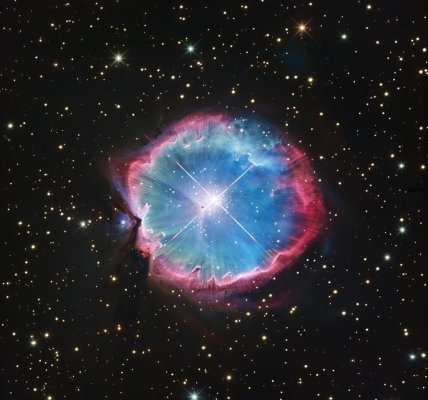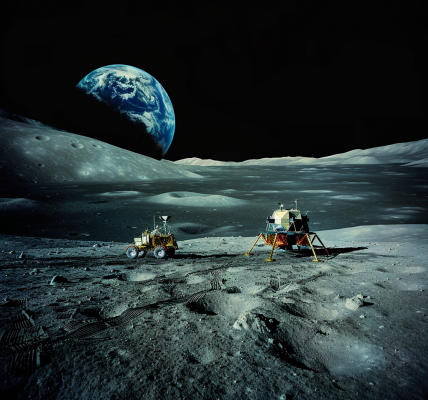Recent scientific research has unveiled a fascinating possibility: Earth may have had a ring system resembling that of Saturn over 400 million years ago. This intriguing hypothesis suggests that a significant asteroid, which was broken apart by Earth’s gravitational forces, could have formed a ring around our planet approximately 466 million years ago during the Ordovician Period.
The Ordovician Period was a time of considerable transformation for Earth, marked by notable changes in life forms, climate, and plate tectonics. During this era, a spike in meteorite impacts was recorded, with nearly two dozen impact craters concentrated within 30 degrees of the equator. This unusual distribution of craters led researchers to propose that these meteoroids may have originated from a rocky ring surrounding Earth.
Lead author Andrew Tomkins, a geologist and professor of Earth and planetary sciences at Monash University in Melbourne, Australia, emphasized the statistical anomaly of having 21 craters clustered so close to the equator. He remarked, “It’s statistically unusual that you would get 21 craters all relatively close to the equator. It shouldn’t happen. They should be randomly distributed.” This observation raises questions about the mechanics behind these impacts and their possible connection to a former ring system.
Beyond explaining the concentration of impact craters, the study also presents a potential explanation for a significant climatic event: a global deep freeze that occurred during this time, one of the coldest periods in Earth’s history. Researchers speculate that the ring’s shadow could have contributed to this dramatic cooling, further illustrating the potential influence of such a ring on Earth’s climate and environment.
The implications of this research extend beyond merely understanding meteorite impacts. Scientists are eager to explore the possible existence of this ancient ring further, as it could provide insights into Earth’s geological and evolutionary history. Tomkins noted that uncovering the mysteries surrounding the ring could prompt new inquiries about how it may have influenced evolutionary development during a pivotal time in Earth’s past.
Understanding the formation of planetary rings is rooted in the concept of the Roche limit, which describes the distance at which a celestial body can be torn apart by the gravitational forces of a planet. When a smaller object ventures too close to a planet, it can be disrupted, leading to the creation of a ring system composed of debris. Saturn’s iconic rings, for example, are believed to have formed from debris shed by icy moons.
Previously, scientists had theorized that a large asteroid within the solar system was responsible for the meteorite impacts during the Ordovician Period. However, the randomness of craters on the moon suggested that a more chaotic impact scenario would have resulted in a different distribution pattern on Earth. The new hypothesis posits that rather than a single asteroid impact, the presence of a ring may explain the clustered nature of these craters.
The research published in the journal Earth and Planetary Science Letters encourages a re-evaluation of our understanding of Earth’s past and the dynamics of celestial interactions. As scientists continue to investigate this hypothesis, they hope to uncover more about the influence of ancient rings on planetary evolution and climate.
In summary, the notion of a Saturn-like ring around Earth approximately 466 million years ago is not only a captivating idea but also a significant scientific inquiry that could reshape our understanding of historical geological events. The study opens the door to further exploration of the relationship between celestial mechanics and Earth’s climatic history, as well as the evolutionary pathways that may have been influenced by such cosmic phenomena.





